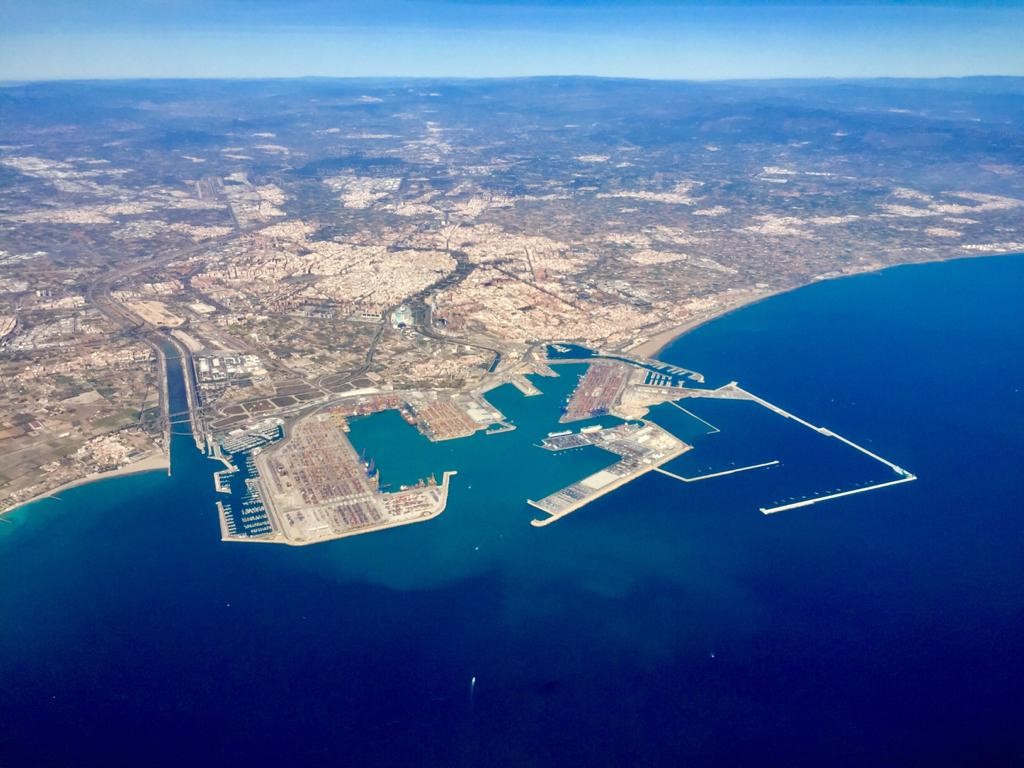Freight traffic and the movement of containers in Valenciaport once again recorded historic figures during the month of September, with the growth of 13.97% and 12.20% respectively compared to the same month last year. In total, this month has seen over 7.16 million tonnes of goods and 477,194 TEUs (6.1 metre or 20-foot containers) have been moved, making it the fifth-best month in the history of Valenciaport in terms of container management and the month of September with the highest number of TEUs moved. This month continues the upward trend that began in August when the historical record for TEU was registered (503,482) and the recovery in activity was already being shown with an increase of 7.07% in the number of containers and 2.45% in goods.
From Valenciaport the increase in accumulated export/import activity in the months of August and September has been put to good use, showing that the worst of the crisis generated by the Covid-19 is now over. These positive data reflect the growth in export values of Spanish industry and agri-foodstuffs in the production of goods and products.
Connectivity and competitiveness
One of the factors that are most favouring the recovery of Valenciaport’s commercial activity – almost now at accumulated, year-on-year levels as before the health and economic crisis caused by the coronavirus – is its connectivity and international competitiveness. In this case, the figures for economic and business activity that the Port Authority of Valencia has been recording are sufficiently explanatory:
During 2019 Valenciaport maintained commercial connections with 915 ports all over the world belonging to 168 countries (in total there are 194 countries in the world). Valenciaport was operated with 98 regular lines managed by 35 different shipping companies.
From the point of view of goods, 225 goods operators (with a traffic of over 1000 t) operate in Valenciaport, of which 51 correspond to shipping companies specialising in containerised goods.
The annual gap is narrowing
In September, full containers handled at the Valencia terminals grew by 13.99% and empty ones by 6.85%. Of the full containers, those for cargo (exports) registered a growth of 2.98%, thus contributing positive values to the Spanish export sector; which means that the growth path that had already been detected in previous months is reinforced. The same is not true of unloading containers (those which are imported) where the indicators continue to reflect negative signs of -16.47%. This is still a two-digit figure which, although it is half of the most critical moments of the pandemic, still reflects the weakness of consumption in the Spanish economy.
In the accumulated period of the year (January-September), the total amount of goods managed by Valenciaport amounted to more than 58.4 million tonnes, which represents a decrease of 5.21% compared to the same period last year, although the gap is narrowing as it is two points less than the accumulated figure for August when the fall was 7.41%, and more than 3 points less than the 8.85 negative points in July.
This is also the case with TEU traffic, which in the first nine months of the year reached 3,929,306, 5.35% less than the accumulated figure for 2019, but two points better than the accumulated figure for August and almost half the accumulated fall of 9.94 points recorded at the end of July. These percentages are already half of those recorded before the summer; therefore, if the trend continues, the year could end in positive figures for both containers and tons managed. Full containers between January and September fell by 3.22%, of which export containers fell by 6%, import containers by -12% and transit containers by 0.76, while empty containers by -11.93%.
In terms of goods, the “non-metallic minerals” sector was the most active in the first nine months of the year, with an increase of 15.28%, while the rest of the goods fell, the most moderate being the “agro-food industry” (-1.04%) with nearly 6 million tonnes, and “construction materials” (-2.99%), while the subsector of “cars and their parts” fell by 28.45% and 7.5 million tonnes mobilised. If we look at containerized goods, the increase in “non-metallic minerals” is 12.77%, “agro-food” 4.86%, or fertilizers 5.54%.
By country, concerning TEUs traffic, the USA leads the way in trade relations with Valenciaport with a movement of 384,818 containers (-2.94%) followed by China with 380,940 (-8.6%) and Turkey with 225,556 (-14.42). During the first months of the year, the dynamism of Algeria (+14.13%), India (+10.11%), Canada (+36.83%) and Italy (+26.84%) stand out.
In terms of geographical areas, 16.29 million tonnes were handled in the Mediterranean and Black Sea area, down by 6.47%, Spain by 6.97 million tonnes (-9.64%) and the Far East by 6.73 million tonnes (-8.23%).
Ro-Ro traffic
In the year as a whole, Valenciaport has commercially managed 364,889 vehicles, 32.64% less than the previous year; although it should be noted that in this month of September the decrease was more moderate (-10%). Passenger traffic continues to be marked by the Covid-19 pandemic in the cruise sector (-91.58%), while regular line passengers have fallen by 40.37%.

























